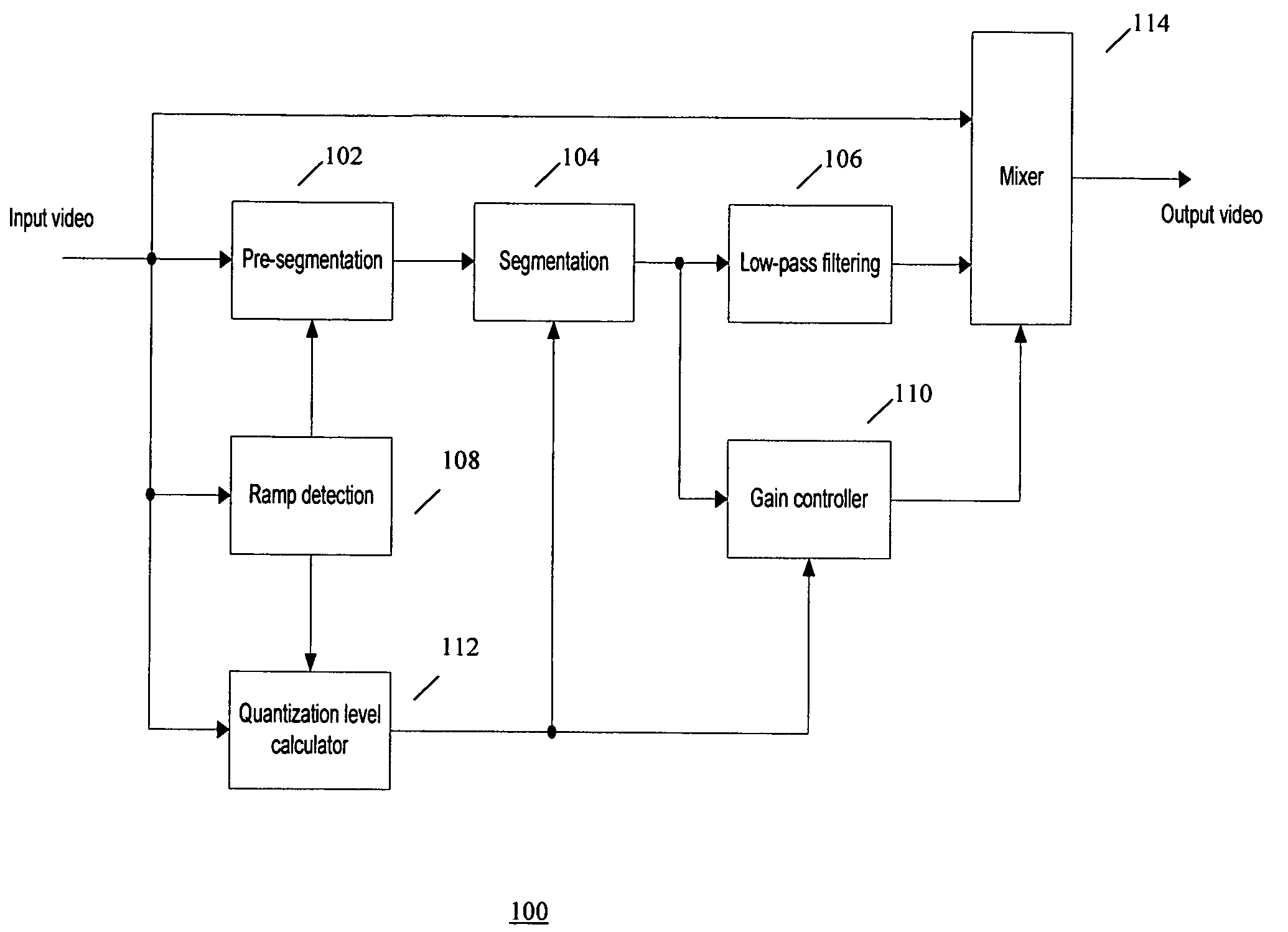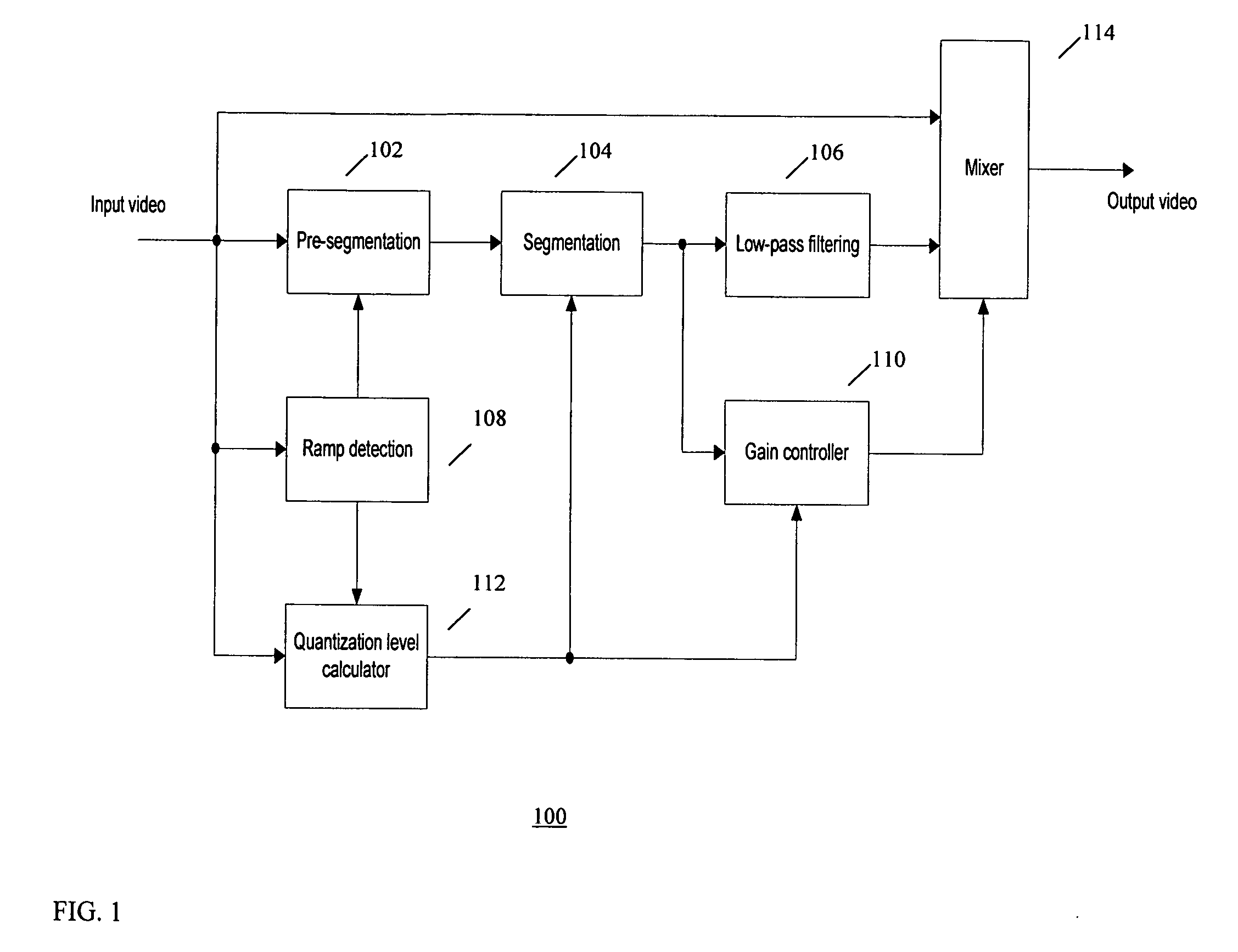Method and system for adaptive quantization layer reduction in image processing applications
a quantization layer and image processing technology, applied in the field of video image processing, can solve the problems of difficult identification of quantization artifacts in digitized images, no longer smooth area for human eyes, and quantization artifacts that cannot be quantized, so as to achieve higher precision luminance, reduce quantization artifacts, and improve quantization accuracy
- Summary
- Abstract
- Description
- Claims
- Application Information
AI Technical Summary
Benefits of technology
Problems solved by technology
Method used
Image
Examples
Embodiment Construction
[0024]The present invention provides a method and a system for adaptive quantization layer reduction, which allows reduction of quantization artifacts in a quantized (digital) image. This involves detecting if each selected pixel in a quantized image area belongs to a ramp area in each of the multiple pre-defined directions. Based on such ramp detection, a quantization level is adaptively (dynamically) selected for each of the pre-defined directions.
[0025]A higher precision version of the input image is also generated, and the quantization levels for the multiple pre-defined directions, along with luminance measurements in a directionally segmented image segment including a selected pixel, are used for gain control in mixing the input quantized image with the higher precision version, to obtain an output image with reduced quantization artifacts. The output image has a higher precision luminance then the input image, but essentially without over-smoothing.
[0026]FIG. 1 shows a functi...
PUM
 Login to View More
Login to View More Abstract
Description
Claims
Application Information
 Login to View More
Login to View More - R&D
- Intellectual Property
- Life Sciences
- Materials
- Tech Scout
- Unparalleled Data Quality
- Higher Quality Content
- 60% Fewer Hallucinations
Browse by: Latest US Patents, China's latest patents, Technical Efficacy Thesaurus, Application Domain, Technology Topic, Popular Technical Reports.
© 2025 PatSnap. All rights reserved.Legal|Privacy policy|Modern Slavery Act Transparency Statement|Sitemap|About US| Contact US: help@patsnap.com



